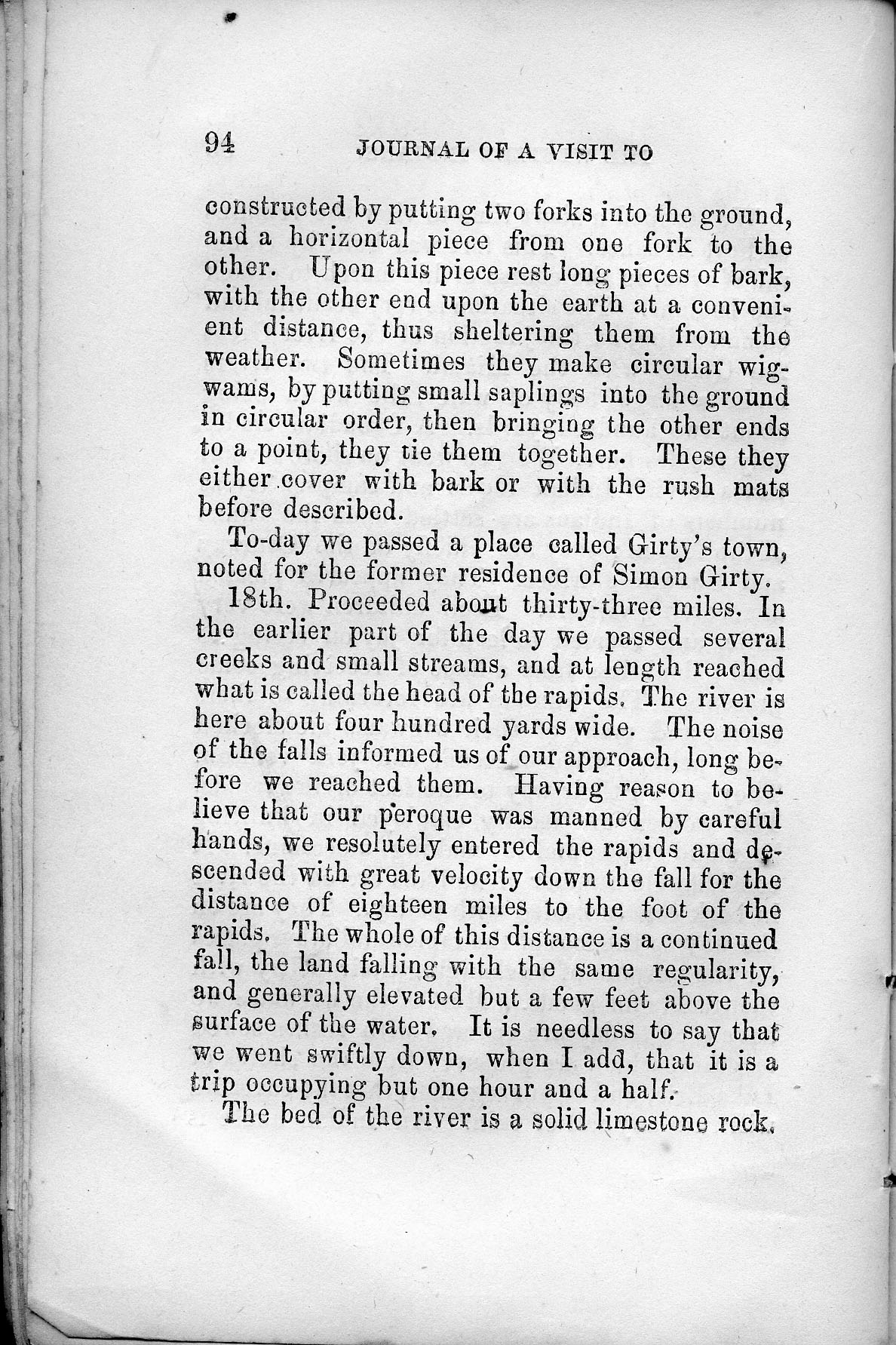constructed by putting two forks into the ground,
and a horizontal piece
from one fork to the
other. Upon this piece rest long pieces of bark,
with the other end upon the earth at a conveni-
ent distance, thus
sheltering them from the
weather. Sometimes they make circular
wig-
wams, by putting small saplings into the ground
in circular order,
then bringing the other ends
to a point, they tie them together. These
they
either cover with bark or with the rush mats
before
described.
To-day we passed a place called Girty's town
noted for the former residence of Simon Girty
Proceeded about thirty-three miles. In
the earlier part of the day we passed
several
creeks and small streams, and at length reached
what is called
the head of the rapids. The river is
here
about four hundred yards wide. The noise
of the falls informed us of our
approach, long be-
lieve that our peroque was manned by careful
hands,
we resolutely entered the rapids and
de-
scended with great velocity down the fall for the
distance of
eighteen miles to the foot of the
rapids. The whole of this distance is a
continued
fall, the land falling with the same regularity,
and
generally elevated but a few feet above the
surface of the water. It is
needless to say that
we went swiftly down, when I add, that it is a
trip occupying but one hour and a half.
The bed of the river is a solid limestone rock,

